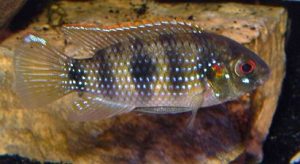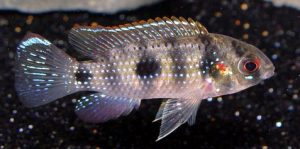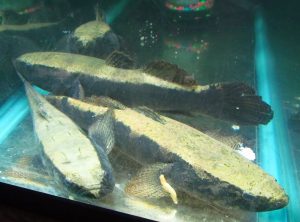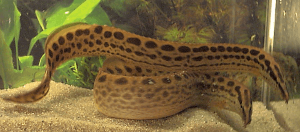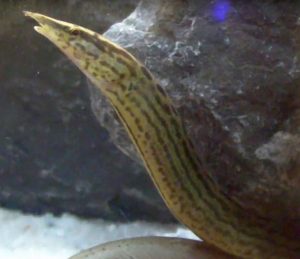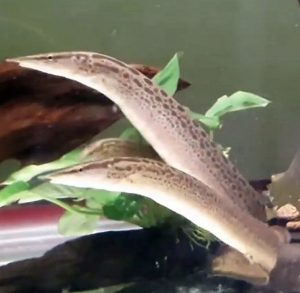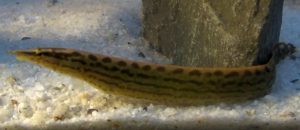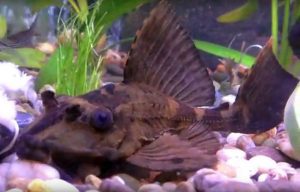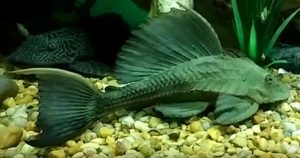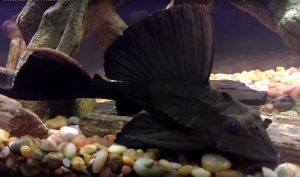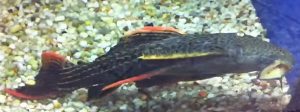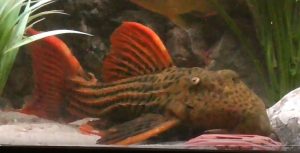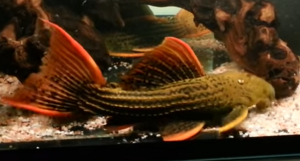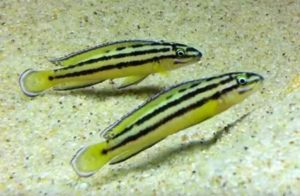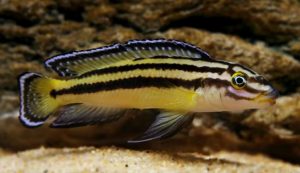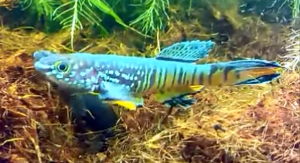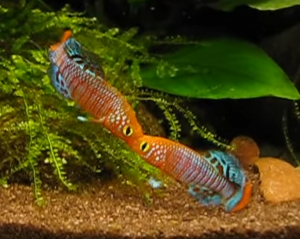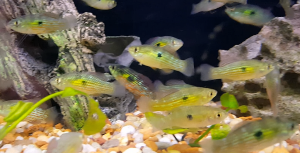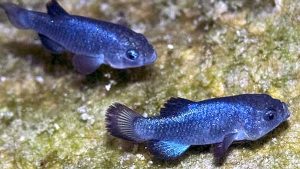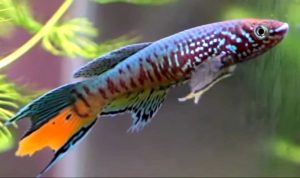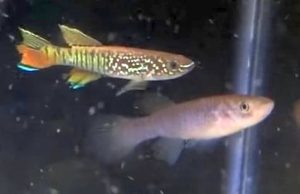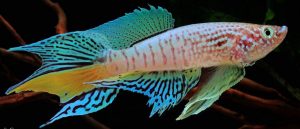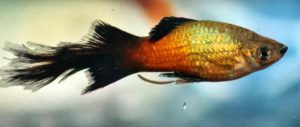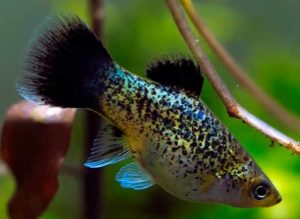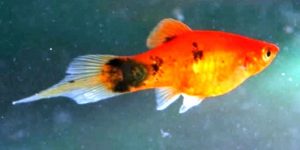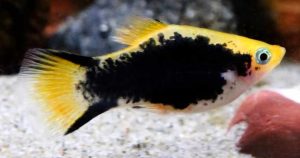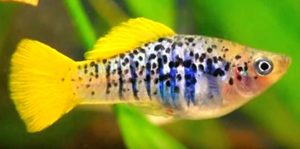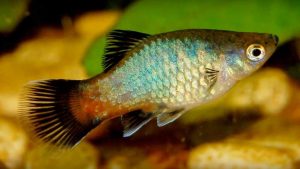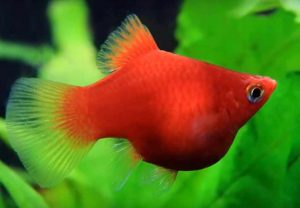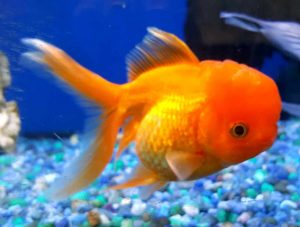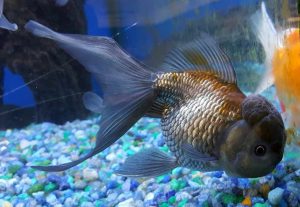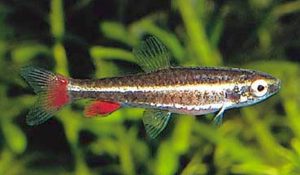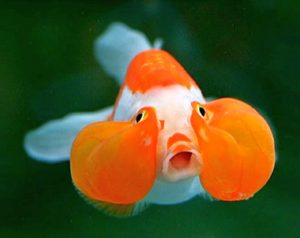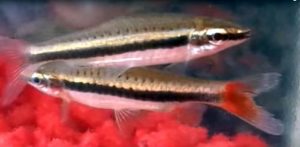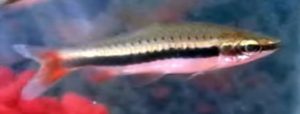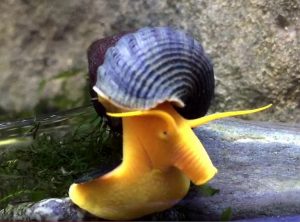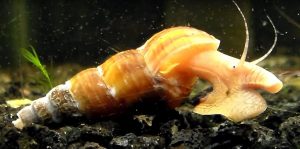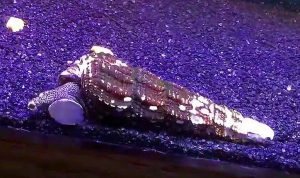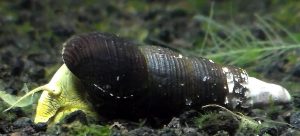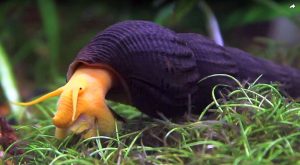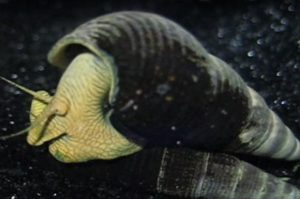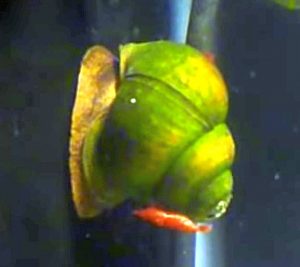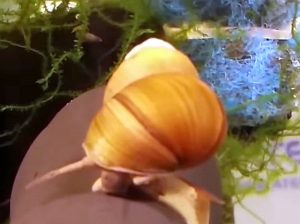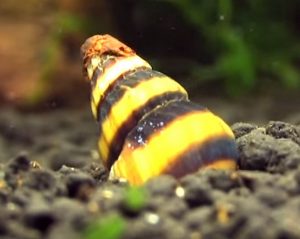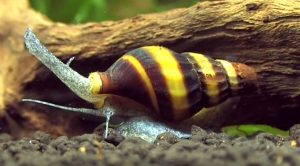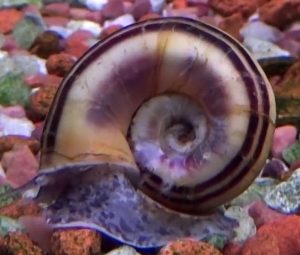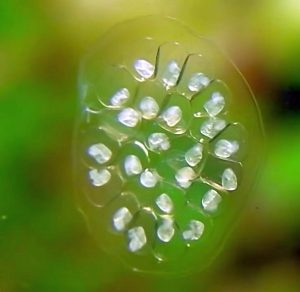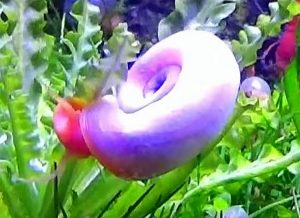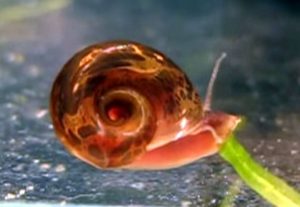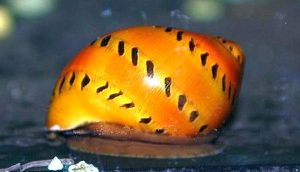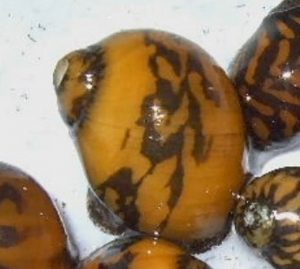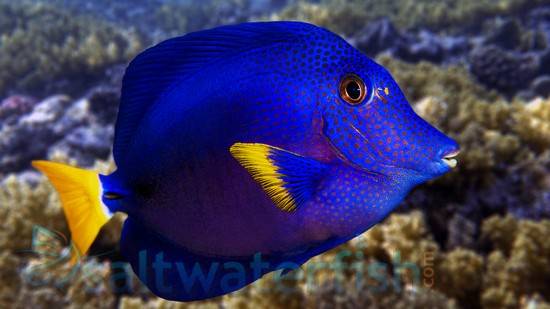The African Butterfly Cichlid (Anomalochromis thomasi) is a small riverine cichlid that inhabits the heavily vegetated forest streams of Sierra Leone, Guinea, and Liberia in Western Africa.
African Butterfly Cichlids prefer living in slightly acidic, oxygen rich streams with a great deal of overhanging vegetation. The fallen leaves, branches, etc. in the water column stains the water a tea color, which is caused by the tannin released during the decomposition of the decaying organic matter. Anomalochromis thomasi often share the same waters with Hemichromis and Pelvicachromis species.
Anomalochromis thomasi have six black bars over a light brown to gray background. Their dorsal and caudal fins are a dark brown to black color, edged with baby blue and red on the outside. A diagonal black bar intersects the red iris in their eyes, and they have a dark black spot on their operculum with a red to reddish blotch on top. Females have less distinct black markings, are a bit smaller than the males, and are noticeably rounder when viewed from the top; especially when gravid.
The African Butterfly Cichlid is a shy, relatively peaceful species but like all cichlids, it becomes territorial during spawning. In an aquarium environment they can be kept with other dwarf African cichlids, smaller tetras, Corydoras, and gourami. Because they are loosely gregarious, they do best in a single species tank in small groups. They should not be housed with any of the more aggressive cichlid species.
African Butterfly Cichlids should be kept in at least a 30 gallon aquarium with a fine or medium size gravel substrate, plenty of rocks for them to hide and spawn upon, some driftwood, and a few broad leaved plants like Echinodorus sp. if desired.
These cichlids will not usually dig up the substrate, so a densely planted aquarium with a lot of rocky cover and roots makes an ideal habitat for them. Some floating plants can be added to diffuse overhead lighting and a good filtration system is needed to maintain water quality.
The African Butterfly Cichlid makes a good choice for newcomers to dwarf cichlids. They are hardy, relatively undemanding, peaceful, and easily bred in an aquarium environment.
If you plan to breed Anomalochromis thomasi, purchase a 6 or more juveniles and grow them out together. Condition them on live or frozen foods until you can identify a pair, or pairs. This species is monogamous and the pairs can easily be identified as they begin to defend their territories.
African Butterfly Cichlids are not too fussy about water chemistry. They are substrate spawners and will readily breed in slightly acidic or alkaline water.
Place the breeding pair in a separate tank with a lot of flat stones and broad leafed plants. An air powered corner sponge filter should be provided for water movement and filtration. When she is ready to spawn, the female will start to clean off several plant leaves or stones to lay her eggs on. The male will join her in cleaning a selected area. When ready, the female will deposit her eggs and move away, letting the male fertilize them. The process continues until up to 500 eggs are deposited.
The eggs hatch out in about two days. During this time, both parents defend the spawning area as the female tends to her eggs. Both take turns digging shallow depressions around the area. When the eggs hatch, the parents move the entire batch of fry from pit to pit until they become free swimming; usually in about 3 to 4 days. It takes another day or so for the free swimming fry to completely absorb their yolk sacs, at which time they can be fed newly hatched brine shrimp or microworms.
The fry are slow growers and the parents will usually continue to care for their brood for another month or so before spawning again.
African Butterfly Cichlids are easy to feed. They are not fussy eaters but should be fed a quality Cichlid pellet along with regular feedings of live, frozen, or freeze dried brine shrimp, bloodworms, daphnia, etc.
African Butterfly Cichlids are somewhat drab as juveniles and are frequently overlooked when found in tropical fish keeping shops. However, once they settle into an aquarium environment, they color up well and are quite beautiful. They are usually available on line and from specialty fish shops at a size of 1″ to 2″.
Minimum Tank Size: 30 gallons
Care Level: Easy
Temperament: Peaceful
Aquarium Hardiness: Hardy
Water Conditions: 73-80° F, KH 10-15, pH 5.5-7.5
Max. Size: 3.15″
Color Form: Gray, Black
Diet: Omnivore
Compatibility: Community or Single species tank
Origin: West Africa
Family: Cichlidae
Lifespan: 10 years
Aquarist Experience Level: Beginner
Images courtesy of Kevin Bauman


